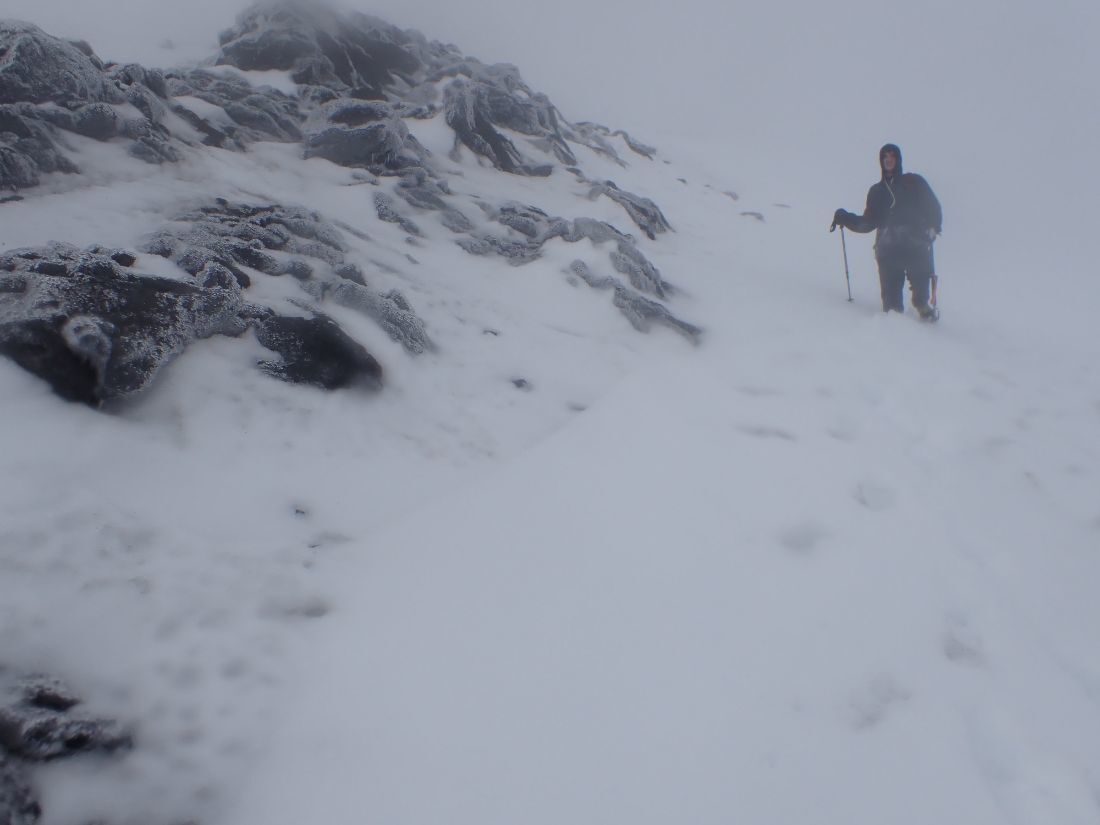
Winter weather on Mount St. Helens is always beautiful and awe-inspiring, but it can also be dangerous and unpredictable. The winter of 2021/2022 has been a striking example of how each winter storm brings on challenging new conditions that require us to adapt our plans, our gear, and our approach to safety.
Warm but intense winter storms in September through mid-December 2021 left treacherous icy conditions on steep rock slopes with just enough snow to put snow bridges through the boulders. Late December and early January 2022 had a 10-day snowstorm that buried the mountain, the roads, and the parking and triggered the season’s first round of big avalanches. January and February brought a return to spring-like weather that brought out climbers that were not prepared for the thick hard ice on the upper mountain. The popular, and often beautiful, March weekends were a long series of storms with one early March atmospheric River event that triggered huge avalanches on the mountain and put a landslide across Forest Road 83. April was more like February should be with a record-breaking snowstorm that put several feet of snow onto the roads long after plowing had ended for the season. May weekends have also been cold and windy with a lot of rain and snow. The first great Spring weekend didn’t happen until May 21st!
We saw it all this winter, and the result was that far fewer climbers successfully reached the summit, and the Volcano Rescue Team (VRT) had a very busy winter season.
These are the most common mistakes that cause people to be VRT customers. Underestimating fog: If there is precipitation in the forecast, the upper half of the mountain is very likely to be in dense fog or whiteout conditions and navigation is VERY difficult. Footprints disappear in minutes if there is snow falling or blowing. Most cell phone GPS apps are useless in rain and snowstorms because touch screens don’t work. If you get lost, hypothermia quickly becomes a serious threat, especially as your exertion level declines.
Underestimating wind: Most climbers’ actual tolerance for wind is limited to 25 mph, especially on a cold day when wind chills become a factor. Weak winter storms have winds of 35 mph and stronger storms may be over 70 mph. High winds pelt exposed skin with ice crystals, make walking and maintaining balance difficult, drown out voices from other climbers, make cell phones and radio communication very difficult, and may raise enough snow into the air to greatly reduce visibility.
Ineffective rain gear: One of the most difficult situations is cold rain and wind down low, and colder wind and snow up high. Climbers get wet on their approach and then quickly become hypothermic when they encounter high winds and cold temps aloft. It takes effective gear and great skill to stay warm on these days. In such conditions, few climbers reach the upper elevations of the mountain.
Ineffective snow gear: There are some winter days when climbers manage to summit in hiking shoes or boots, but on most days insulated waterproof mountaineering boots with sharp edges and treads are needed. When there is ice, crampons have toe and heel points that are critical for safety. Slip-on
traction devices like Micro-spikes(™), spring-steel coils, and studs, do not. It is extremely hard to predict when snow will be soft enough that snowshoes or skis are required. Snowshoes need to be models designed for climbing, not for the forest, and be properly fitted for the climber’s height/weight to provide adequate flotation and traction where required. Soft snow conditions happen with mid-winter snows and with warm spring days.
Skiing and glissading: Glissaders have a great time, but this activity is also a major cause of accidents. Safety requires that crampons are off, an ice ax is correctly in hand, snow is soft enough to dig in your heels, and that climbers do not end up in chutes with holes and exposed rocks. Skiers need to be aware of icy conditions, the hazards of crossing boot paths and glissade trails, and the challenging nature of some downhill routes.
Cornices and avalanches: Cornices are shelves of wind-blown snow that extend out over the air on the lee side of sharp ridges. The cornice on the rim often extends 4-6 feet over air and sometimes as much as 10 feet or more. Cornices also commonly form on the east side of the climbing route between 4800 and 5500’. The weight of a single climber can cause failure and a fall of hundreds of feet. Avalanches, even very large avalanches, do occur on Mount St. Helens every winter and spring. It is important to note that they continue well into May, long after the Northwest Avalanche Center has stopped forecasts for the season.
Pets: There are dogs bred and conditioned for cold temps, heavy exercise, and ice and snow. They have a great time and often chase their owner/skiers all the way from the summit back to the car. Other dog breeds, and dogs without tough paws and exercise conditioning, suffer from hypothermia, dehydration, fatigue, and nasty paw injuries that often compel their owners to return to the trailhead.
Mount St Helens in the winter is glorious and spectacular, but the cold weather and snow add significant risks that are not present in the summer season. To have a great experience, and not become a VRT client, adequate preparation is critical. Most importantly, climbers must study the conditions and forecasts and make good decisions about when it is time to turn around, or perhaps not even travel to the mountain. The VRT is awesome, but in bad weather, help may be hours away. The mountaineer’s adage “It will still be here next time” is always a good one to embrace (except perhaps on Mount St. Helens in 1979…).
By Andy Goodwin and Dave Wheeler.